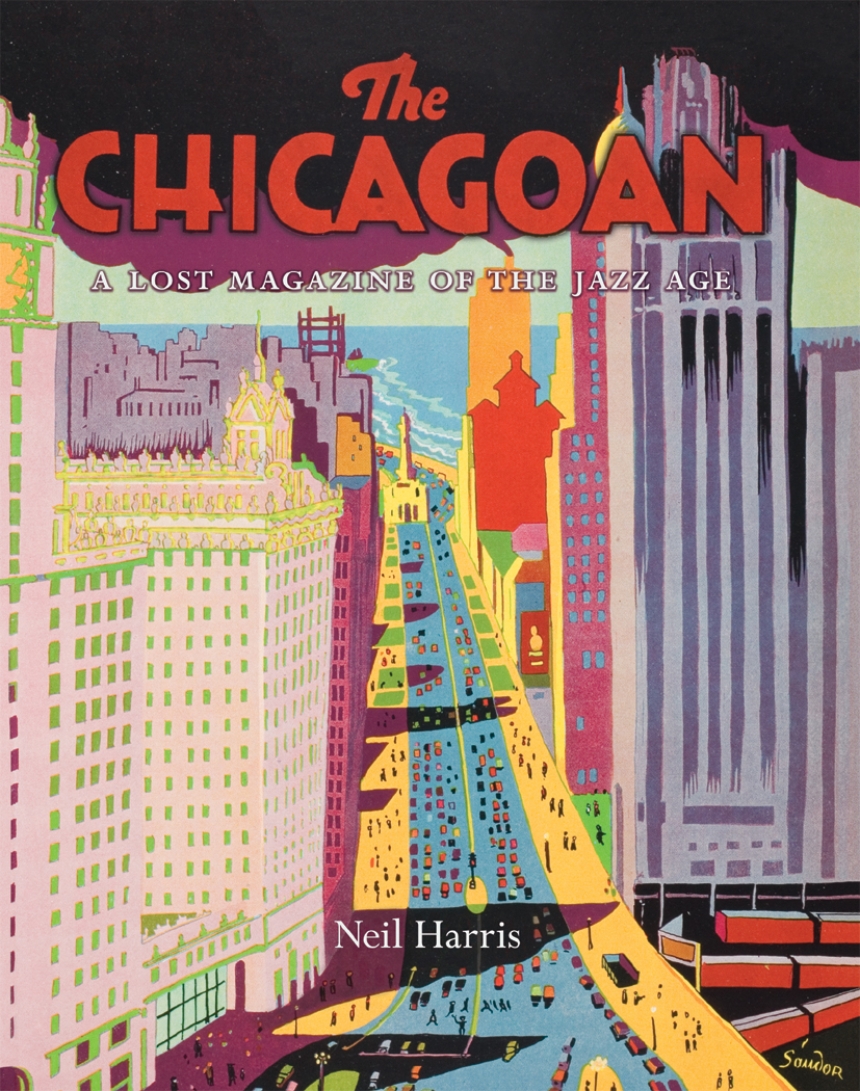The Chicagoan
A Lost Magazine of the Jazz Age
While browsing the stacks of the Regenstein Library at the University of Chicago some years ago, noted historian Neil Harris made a surprising discovery: a group of nine plainly bound volumes whose unassuming spines bore the name the Chicagoan. Pulling one down and leafing through its pages, Harris was startled to find it brimming with striking covers, fanciful art, witty cartoons, profiles of local personalities, and a whole range of incisive articles. He quickly realized that he had stumbled upon a Chicago counterpart to the New Yorker that mysteriously had slipped through the cracks of history and memory.
Here Harris brings this lost magazine of the Jazz Age back to life. In its own words, the Chicagoan claimed to represent “a cultural, civilized, and vibrant” city “which needs make no obeisance to Park Avenue, Mayfair, or the Champs Elysees.” Urbane in aspiration and first published just sixteen months after the 1925 appearance of the New Yorker, it sought passionately to redeem the Windy City’s unhappy reputation for organized crime, political mayhem, and industrial squalor by demonstrating the presence of style and sophistication in the Midwest. Harris’s substantial introductory essay here sets the stage, exploring the ambitions, tastes, and prejudices of Chicagoans during the 1920s and 30s. The author then lets the Chicagoan speak for itself in lavish full-color segments that reproduce its many elements: from covers, cartoons, and editorials to reviews, features—and even one issue reprinted in its entirety.
Recalling a vivid moment in the life of the Windy City, the Chicagoan is a forgotten treasure, offered here for a whole new age to enjoy.
The University of Chicago Library has a digital edition of the magazine. • Read an interview with the author and see a gallery of covers and illustrations.
400 pages | 81 color plates, 301 halftones | 11 x 14 | © 2008
Art: American Art
History: American History
Reviews
Awards
Choice Magazine: CHOICE Outstanding Academic Title Awards
Won
Association of American Publishers: PROSE Book Award
Won
Illinois State Historical Society: Russell P. Strange Memorial Book of the Year Award
Won
